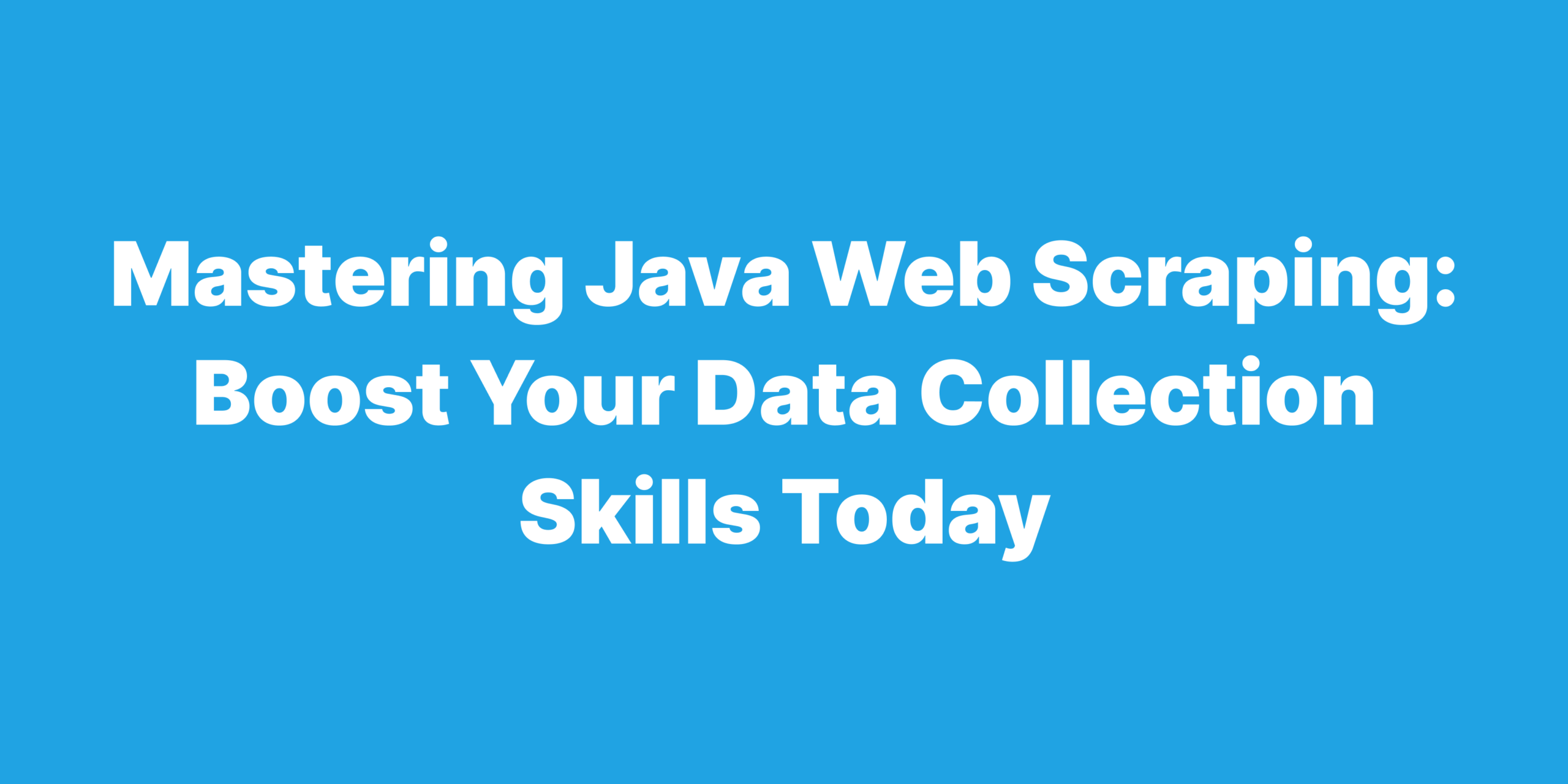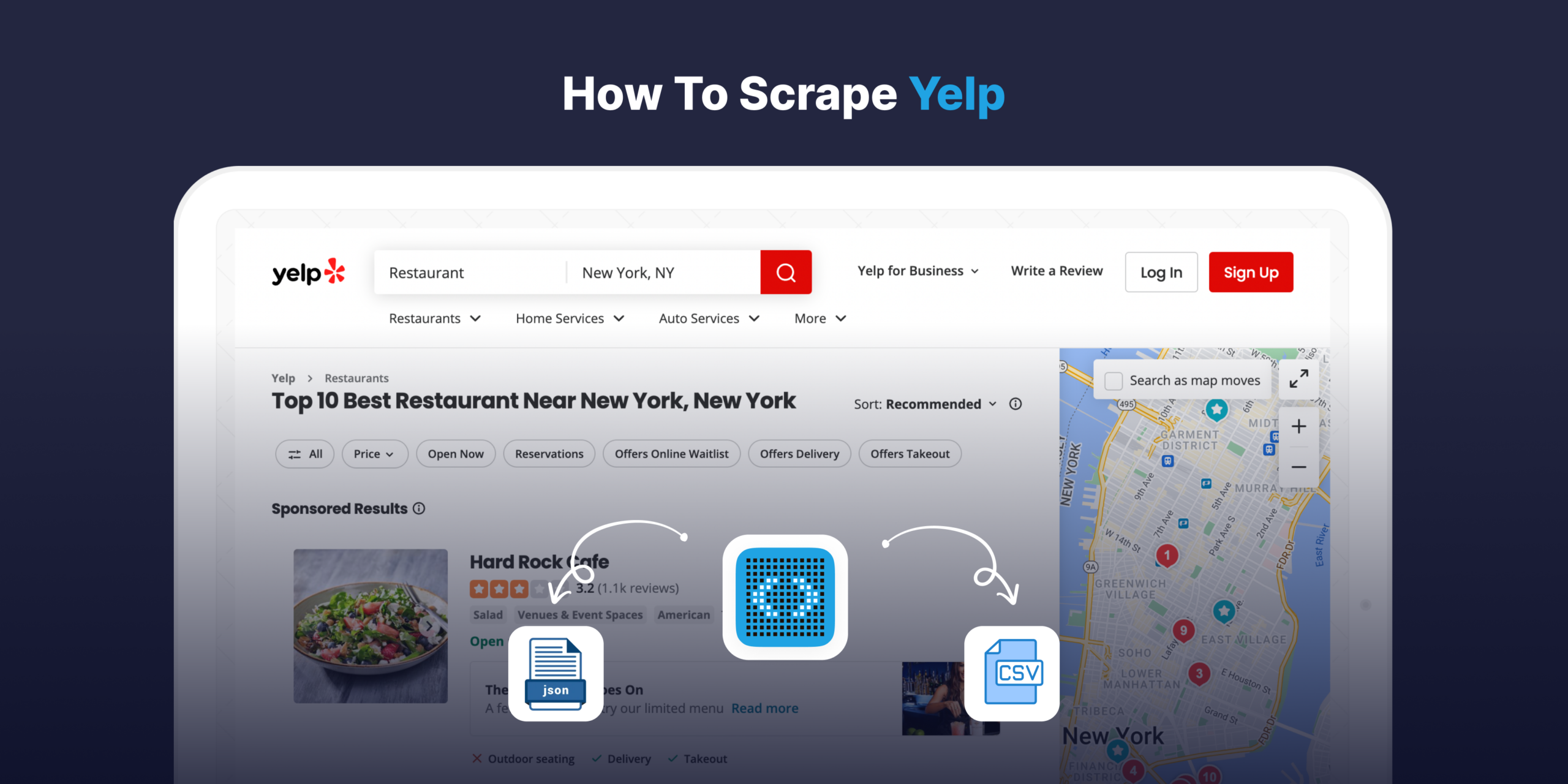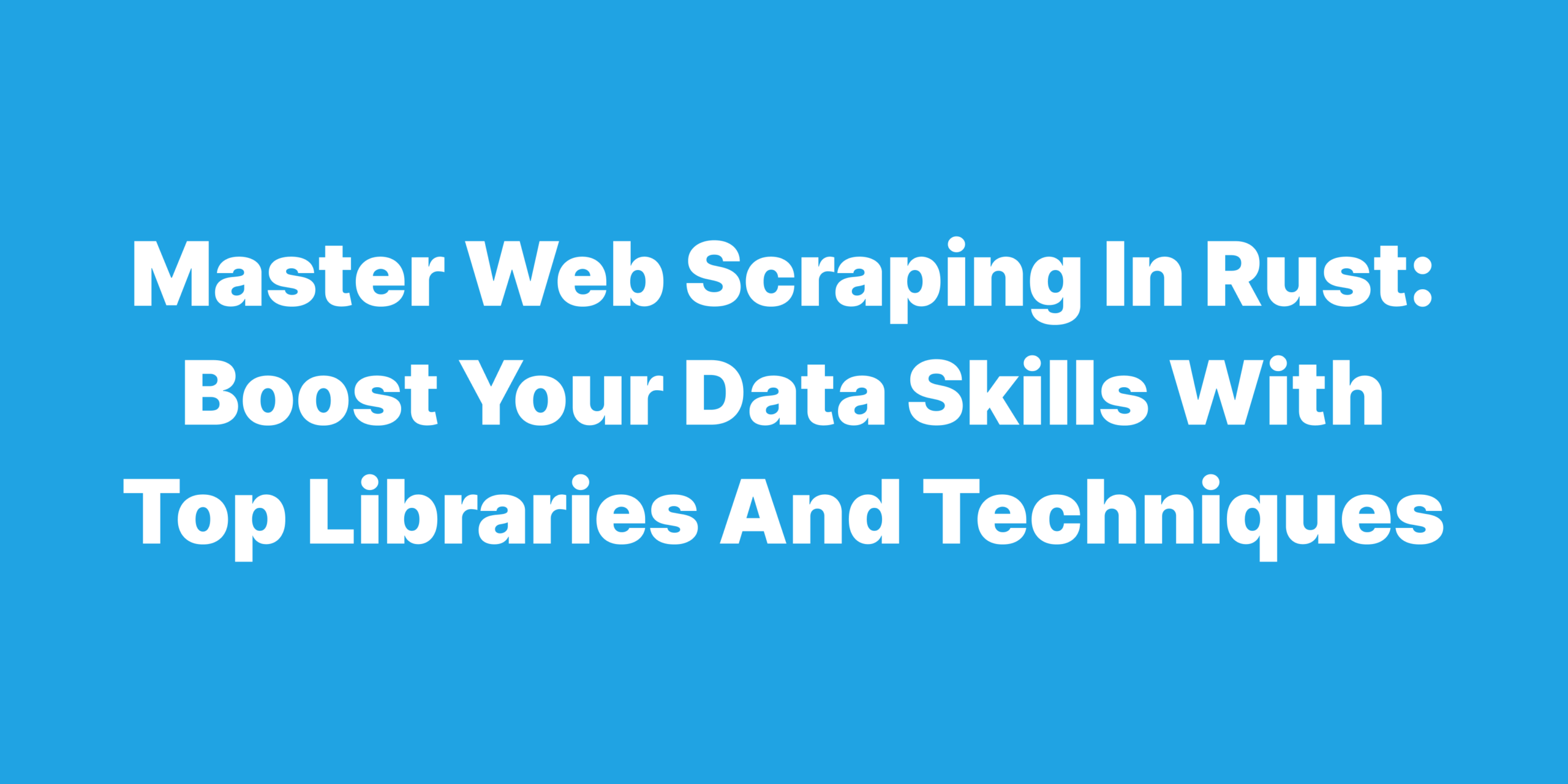Web scraping has become an essential tool for data enthusiasts looking to extract valuable insights from the vast sea of information available on the internet. Whether you’re aiming to gather data from websites, process it, and transform it into structured, actionable information for analysis, leveraging a robust web scraping API can significantly streamline the process. The importance of web scraping in data analysis cannot be overstated, as it opens up new opportunities for businesses and individuals to make informed decisions based on real-time data. This article will provide an overview of web scraping in Java, a powerful and versatile language for web scraping. We will explore different aspects of web scraping, including identifying HTML objects by ID, comparing the best Java libraries for web scraping, building a web scraper, and parsing HTML code using Java libraries. Get ready to embark on an exciting journey that will enhance your data analysis skills and expand your understanding of web scraping in Java.
Kickstart Your Java Web Scraping Journey: A Comprehensive Guide
Java is an excellent choice for web scraping due to its versatility, robustness, and extensive library support. As an object-oriented programming language, Java allows you to model web page elements as objects, making it easier to interact with and extract data from websites. Additionally, Java’s strong support for multithreading enables efficient and fast web scraping, giving you the ability to process multiple pages simultaneously.
Before diving into web scraping with Java, it’s crucial to set up your development environment. First, ensure that you have the latest version of the Java Development Kit (JDK) installed. Next, choose an Integrated Development Environment (IDE) like Eclipse or IntelliJ IDEA, which will provide you with a user-friendly interface for writing and testing your code. Finally, it’s essential to familiarize yourself with Java libraries that are specifically designed for web scraping, such as Jsoup, HtmlUnit, or Selenium. These libraries will streamline the process of extracting and parsing data from web pages.
As you begin your web scraping journey, understanding some basic concepts will be invaluable. Web pages are typically structured using HTML, a markup language that defines elements such as headings, paragraphs, tables, and links. When scraping a web page, you’ll need to interact with these HTML elements to extract the information you’re interested in. Java web scraping libraries provide you with tools to navigate the HTML structure and locate specific elements based on their attributes, such as ID, class, or tag name. Once you’ve identified the desired elements, you can extract their content and store it in a structured format for further analysis. By mastering these fundamental concepts, you’ll be well on your way to becoming a proficient web scraper using Java.
Pinpointing HTML Objects with Java: Boost Your Web Scraping Precision
HTML objects play a crucial role in web scraping, as they represent the building blocks of a web page’s structure. Each HTML object corresponds to an element on the page, such as a heading, paragraph, image, or link. When web scraping, you need to identify and interact with specific HTML objects to extract the data you’re interested in. Being able to accurately pinpoint these objects is essential for efficient and effective web scraping.
One of the most common and reliable ways to identify HTML objects in Java is by using their ID attribute. IDs are unique identifiers assigned to HTML elements, ensuring that you can locate a specific object without confusion. Java web scraping libraries, such as Jsoup, provide methods that enable you to search for and retrieve HTML objects based on their ID. For example, in Jsoup, you can use the getElementById() method to find an element with a particular ID.
Let’s consider a practical example. Suppose you want to extract the title of a blog post from a web page, and the HTML code for the title looks like this: <h1 id="blog-title">Java Web Scraping</h1>. To identify and extract the title text using Jsoup, you would first connect to the web page and parse its HTML content. Next, you would use the getElementById() method to locate the <h1> element with the ID “blog-title”. Finally, you would retrieve the text content of the element, resulting in the extracted title “Java Web Scraping”. By leveraging the power of IDs and Java web scraping libraries, you can greatly enhance the precision and effectiveness of your web scraping endeavors.
Supercharge Your Java Web Scraping with Top Libraries
When it comes to web scraping in Java, having the right library in your arsenal can make all the difference. Java offers a plethora of web scraping libraries designed to simplify the process of extracting data from websites, providing you with powerful tools to navigate, search, and parse HTML content with ease. By choosing the best library for your specific needs, you can enhance your web scraping experience and boost the efficiency of your data collection efforts.
Jsoup
Pros:
- User-friendly and intuitive API, making it easy to learn and use for web scraping beginners.
- Efficient and fast parsing of HTML, even for large web pages.
- Supports CSS selectors for precise element selection and extraction.
Cons:
- Lacks built-in support for handling JavaScript-heavy websites.
- Limited to single-threaded execution, which may be slower for processing large numbers of pages.
- No built-in support for handling CAPTCHAs or managing proxies.
HtmlUnit
Pros:
- Fully-fledged headless browser, capable of handling JavaScript and AJAX-loaded content.
- Supports a wide range of browser versions and settings, enabling you to mimic different user agents.
- Provides built-in support for managing cookies and handling redirects.
Cons:
- Steeper learning curve compared to libraries like Jsoup.
- Higher memory and CPU usage due to its browser simulation capabilities.
- Slower page rendering compared to simpler libraries.
Selenium
Pros:
- Comprehensive support for handling JavaScript, AJAX, and dynamic web content.
- Allows you to interact with web pages like a real user, including clicking buttons and filling out forms.
- Supports multiple browsers, including Chrome, Firefox, and Edge, through browser-specific drivers.
Cons:
- More resource-intensive compared to libraries that only parse HTML.
- Slower execution time due to browser automation capabilities.
- Requires additional setup and configuration of browser drivers.
Jaunt
Pros:
- Lightweight and fast, with a focus on web scraping and automation tasks.
- Offers a simple and intuitive API for HTML and XML parsing.
- Provides built-in support for handling cookies, sessions, and proxy servers.
Cons:
- Limited support for handling JavaScript and dynamic content.
- Less popular and less widely used compared to other libraries, which may result in fewer resources and community support.
- Not free for commercial use, requiring a license for commercial projects.
WebDriver
Pros:
- Offers a high-level API for browser automation and web scraping, with support for handling JavaScript and dynamic content.
- Supports multiple browsers and platforms, enabling you to create versatile web scraping solutions.
- Provides built-in support for handling timeouts, waits, and retries, ensuring more stable web scraping execution.
Cons:
- More resource-intensive compared to lightweight HTML parsers.
- Requires additional setup and configuration of browser drivers and dependencies.
- Slower execution time due to its comprehensive browser automation capabilities.
Craft Your Own Java Web Scraper: A Step-by-Step Guide
Building a web scraper in Java is a rewarding process that will empower you to collect data from a variety of online sources. By leveraging the power of Java libraries, you can create a custom web scraper tailored to your specific needs. In this section, we’ll guide you through the essential steps to build a web scraper in Java using the popular Jsoup library.
First, ensure you have the necessary dependencies installed. If you’re using a build tool like Maven or Gradle, add the Jsoup dependency to your project’s configuration file. For Maven, include the following in your pom.xml file:
xmlCopy code<dependency>
<groupId>org.jsoup</groupId>
<artifactId>jsoup</artifactId>
<version>1.14.3</version>
</dependency>
Next, begin by connecting to the target website and downloading its HTML content. With Jsoup, you can achieve this using the Jsoup.connect() method, followed by the get() method:
javaCopy codeimport org.jsoup.Jsoup;
import org.jsoup.nodes.Document;
public class WebScraper {
public static void main(String[] args) throws IOException {
String url = "https://example.com";
Document document = Jsoup.connect(url).get();
}
}
Once you have the HTML content, you can use Jsoup’s methods to search for and extract specific elements based on their attributes, such as ID, class, or tag name. For example, to extract all the paragraph elements from the HTML, you can use the select() method:
javaCopy codeimport org.jsoup.nodes.Element;
import org.jsoup.select.Elements;
public class WebScraper {
public static void main(String[] args) throws IOException {
// ...
Elements paragraphs = document.select("p");
for (Element paragraph : paragraphs) {
System.out.println(paragraph.text());
}
}
}
By following these steps and familiarizing yourself with the powerful features of Java web scraping libraries like Jsoup, you’ll be well-equipped to build your own web scraper and unlock the potential of web data for your projects.
Unravel the Web: HTML Parsing with Java Libraries
Parsing HTML code is a vital step in web scraping, as it allows you to extract and manipulate data from the HTML structure of web pages. Essentially, parsing involves breaking down the HTML code into a tree-like structure of elements and their attributes, making it easier to navigate and locate specific pieces of data.
Java offers a wealth of libraries that simplify the process of parsing HTML code, with some popular options including Jsoup, HtmlUnit, and Java’s built-in XML libraries. These libraries provide tools to parse the HTML content, allowing you to search for and extract elements based on their attributes or content, and even modify the HTML structure if needed.
Let’s explore an example using the Jsoup library. Suppose you have a web page containing a list of product names and prices within an HTML table, and you want to extract this information. First, connect to the web page and parse its content:
javaCopy codeimport org.jsoup.Jsoup;
import org.jsoup.nodes.Document;
public class HtmlParser {
public static void main(String[] args) throws IOException {
String url = "https://example.com/products";
Document document = Jsoup.connect(url).get();
}
}
Next, navigate to the table element and extract the rows using the select() method:
javaCopy codeimport org.jsoup.nodes.Element;
import org.jsoup.select.Elements;
public class HtmlParser {
public static void main(String[] args) throws IOException {
// ...
Elements rows = document.select("table.product-list > tbody > tr");
}
}
Finally, iterate through the rows and extract the product names and prices from the corresponding table cells:
javaCopy codepublic class HtmlParser {
public static void main(String[] args) throws IOException {
// ...
for (Element row : rows) {
String productName = row.select("td.product-name").text();
String productPrice = row.select("td.product-price").text();
System.out.printf("Product: %s | Price: %s%n", productName, productPrice);
}
}
}
By mastering HTML parsing with Java libraries, you can efficiently extract valuable data from websites and transform it into structured, actionable information.
Elevate Your Data Game with Java Web Scraping
In conclusion, web scraping in Java is a powerful technique that unlocks a world of online data for your analysis and projects. This article covered the essentials of web scraping, such as identifying HTML objects, choosing the right Java library, building a web scraper, and parsing HTML code. With these skills in your toolkit, you’re now equipped to explore new data sources and uncover valuable insights. As a next step, why not try the Scrape Network for free? We’ll handle all the proxies, captchas, and ensure you don’t get blocked, enabling you to focus on what matters most: harnessing the power of web data to drive your success.
Frequently Asked Questions
What factors are important when selecting a Java web scraping library?
When choosing a Java library for web scraping, consider factors such as ease of use, speed, support for JavaScript and dynamic content, handling of cookies and redirects, resource consumption, and community support.
What sets the top 5 Java web scraping libraries apart from each other?
The key differences between the top 5 Java web scraping libraries include their support for JavaScript, browser automation capabilities, resource consumption, ease of use, and additional features such as handling cookies, redirects, and managing proxies.
How can I stay informed about the latest web scraping libraries and best practices?
To stay updated on the latest developments in web scraping libraries and best practices, follow relevant blogs, forums, and newsletters in the field, engage with web scraping communities, and monitor the official documentation and release notes of popular web scraping libraries.
What benefits does the Scrape Network scraping API offer, and how can I get started?
Leveraging the Scrape Network scraping API can save you time and effort by handling proxies, captchas, and avoiding blocks, allowing you to focus on data analysis and implementation. To experience the benefits, sign up now for 5,000 free API calls and elevate your web scraping game.






